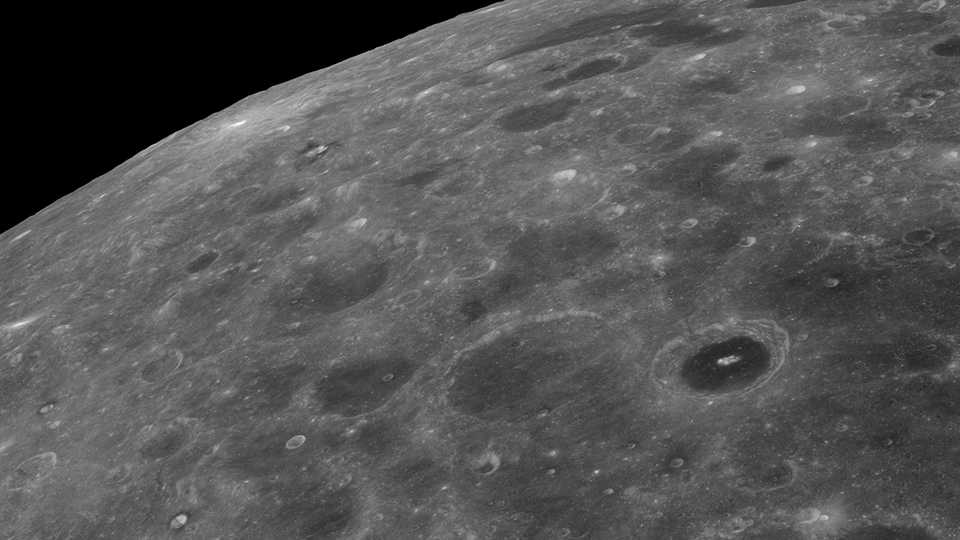Universe Update
Causing Craters

The American Astronomical Society (AAS) meeting kicked off this morning with the Kavli Foundation lecture delivered by Bill Bottke of the Southwest Research Institute. In yesterday’s article, I wrote about the intersection between astronomers and planetary geologists, and Bottke embodies that kind of crossover potential.
As I described yesterday, Meenakshi Wadhwa of Arizona State University studies the physical properties of meteorite samples to reconstruct the history of the Solar System. Bottke doesn’t look at the meteorites themselves; instead, he looks at the scars they leave behind in the form of craters on Earth’s Moon and the planet Mars.
The core concept is relatively straightforward: big objects leave big craters, small objects leave small craters. What Bottke is trying to tease out is the distribution of sizes of asteroids, comets, and other “leftovers” that inhabit the Solar System—not just today (relatively straightforward) but in the distant past (quite tricky). In turn, this tells us about the history of planetary formation and helps us answer the existentially important question, “How did we get here?”
In search of answers, Bottke uses computers to simulate the behavior of these small objects as they get jostled around by the gravitational influence of the giant planets. (We describe this effect in our video Simulating Solar System Formation, which nonetheless barely scratches the surface of what Bottke and his colleagues are trying to do.) Working backward from what we observe today—and what we believe happened a long time ago—simulations can reconstruct how many objects of different sizes and compositions existed billions of years ago, as the planets were forming. But once you have a prediction of what the distribution of “little guys” looked like in the early days of the Solar System, how do you check your work?
That’s where the craters come in! Although Earth’s active geology erases craters that formed a long time ago, the surfaces of the Moon and Mars have experienced fewer changes since the early days of the Solar System… But notice I say “fewer” changes, not “no” changes.
Because Mars lies closer to the Asteroid Belt than Earth or the Moon, most of the craters on the martian surface are likely due to impacts from asteroids that strayed too close to the Red Planet. Indeed, the distribution of crater sizes mirrors the distribution of observed asteroid sizes—fewer big craters, many more smaller craters, in the correct proportions.
But for every ten asteroids that struck Mars in the distant past, only one asteroid hit the Moon. So how do the Moon’s observed crater sizes compare to asteroid sizes?
First off, we need to look at the far side of the Moon, which has preserved craters better than the near size (darn those lunar mare); Bottke described the Moon’s far side as the oldest surface in the inner Solar System (with the exception of asteroids), which means we can find the most ancient craters there. Furthermore, using techniques not unlike what Wadhwa uses to date meteorites, we can figure out the ages of the surrounding lunar surface, which helps pin down the ages of the craters.
And indeed, the sizes of the most ancient craters do not match the modern asteroid population. Indeed, Bottke estimates that less than a quarter of the of the oldest craters were caused by main-belt asteroids crashing into the Moon. Instead, it seems that we are looking at the scars leftover from the impact of planetesimals—the building blocks of the planets—billions of years ago.
In spite of the work of Bottke and his colleagues, many questions remain. And just today, NASA announced the selection of two missions to “explore the early Solar System.” Which doesn’t mean that the missions will be rocketed back in time—rather, the two missions will visit different types of asteroids, in hopes of pinning down more details about the environment in which the planets took shape. Building on the work of Wadhwa and Bottke and many others, these future missions will help us sort out our cosmic history.
Category: Solar System Stuff